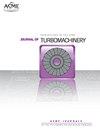涡轮电动飞机尾翼集成边界层进气推进系统
IF 3.1
3区 工程技术
Q3 ENGINEERING, MECHANICAL
引用次数: 0
摘要
摘要本文介绍了一种具有边界层吸进(BLI)的涡轮电动民用运输机尾翼集成推进系统的概念设计准则和结果。气动性能目标是在巡航时无分离和无冲击,与基线常规飞机相比,燃油消耗减少。BLI效益的评估是基于CFD和TASOPT软件的计算,既可以描述设计挑战,也可以建立解决这些挑战的物理机制。该指南包括一个“马蹄形”进气道,以接受非均匀流动而不会产生分离,一个类似于超临界翼型的短舱外形,以降低冲击强度,以及一个环形喷嘴,以消除尾部bli推进器之间的流动分离。概念设计在单通道飞机的轴对称尾翼上有9个带电风扇的BLI推进器。风扇由双翼下涡轮风扇提供动力。在巡航马赫数为0.8时,与基线双翼下涡扇结构相比,尾翼bli双翼下涡扇飞机的有效载荷-航程燃油消耗(PRFC)的估计效益为10.4%。敏感性研究进一步表明,安装的风机等熵效率每提高1%,PRFC效益就会提高0.8%。本文章由计算机程序翻译,如有差异,请以英文原文为准。
Tail-Integrated Boundary Layer Ingesting Propulsion Systems for Turbo-Electric Aircraft
Abstract This article presents conceptual design guidelines and results for a tail-integrated propulsion system for a turbo-electric civil transport aircraft with boundary layer ingestion (BLI). The aerodynamic performance goal is separation-free and shock-free operation at cruise with fuel burn reduction, compared with a baseline conventional aircraft for the same mission. The assessment of BLI benefits is based on calculations using CFD and TASOPT software, both to characterize the design challenges and to establish the physical mechanisms for resolving these challenges. The guidelines include a “horseshoe” inlet to accept the non-uniform flow without incurring separation, a nacelle profile similar to supercritical airfoils to reduce shock strength, and an annular nozzle to eliminate flow separation between tail-BLI propulsors. The conceptual design has nine BLI propulsors with electric fans on an axisymmetric tail of a single-aisle aircraft. The fans are powered by twin underwing turbofans. The estimated benefit of the tail-BLI, twin underwing turbofan aircraft is 10.4% in Payload-Range Fuel Consumption (PRFC) at a cruise Mach number of 0.8, compared to a baseline twin underwing turbofan configuration. Sensitivity studies further show that a 1% increase in installed (i.e., with BLI) fan isentropic efficiency translates to 0.8% rise in PRFC benefit.
求助全文
通过发布文献求助,成功后即可免费获取论文全文。
去求助
来源期刊
CiteScore
4.70
自引率
11.80%
发文量
168
审稿时长
9 months
期刊介绍:
The Journal of Turbomachinery publishes archival-quality, peer-reviewed technical papers that advance the state-of-the-art of turbomachinery technology related to gas turbine engines. The broad scope of the subject matter includes the fluid dynamics, heat transfer, and aeromechanics technology associated with the design, analysis, modeling, testing, and performance of turbomachinery. Emphasis is placed on gas-path technologies associated with axial compressors, centrifugal compressors, and turbines.
Topics: Aerodynamic design, analysis, and test of compressor and turbine blading; Compressor stall, surge, and operability issues; Heat transfer phenomena and film cooling design, analysis, and testing in turbines; Aeromechanical instabilities; Computational fluid dynamics (CFD) applied to turbomachinery, boundary layer development, measurement techniques, and cavity and leaking flows.

 求助内容:
求助内容: 应助结果提醒方式:
应助结果提醒方式:


